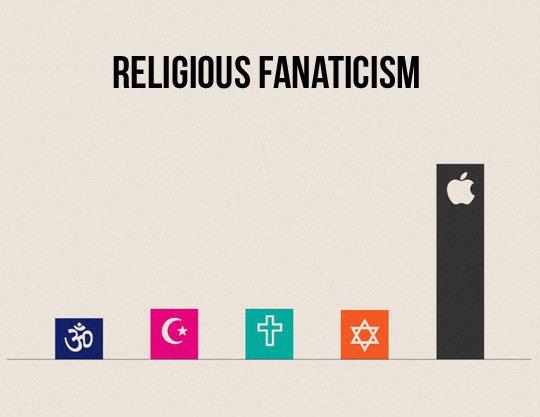I cam across this superb post on Facebook. It is well worth you taking the time to read it.
• Diet, nutrition, assimilation and elimination •
• Activating elimination through the skin •
• Breathing, oxygenation & clean air •
• Avoidance of geopathic stress •
• Lymphatic system activation •
• Chelating ionizing radiation •
• Mental “ detoxification ” •
• Emotional “cleansing” •
• Spiritual “cleansing” •
• Internal cleansing •
• Life energy flow •
• Avoid toxins •
• Sunlight •
• Fasting •
Love
••
•
1. Adjust your dietary habits to a regimen that eliminates the toxins faster than they accumulate.
This will allow a progressive normalization that will keep your body’s metabolism in a state of natural equilibrium. This means among other things:
Cut out or keep to a minimum all toxin-containing foods, drugs and drinks (coffee, meat, non-organic foods, moldy foods producing mycotoxins, soda pops, non-fermented soy foods, aspartame marketed as ‘NutraSweet’, ‘Equal’, ‘Spoonful,’ ’Equal Measure’, ‘Canderal’ (E951), ‘Benevia’, etc.). Avoid refined and devitalized foods more or less devoid of nutrition such as sugar, white flour and canned food. Don’t overeat. Care for your intestinal flora, a major contributor to proper digestion & nutrient extraction as well as your immune system.
2. Shun toxins and do without as many man-made chemicals as possible – use truly natural & ecological products instead.
Avoid chemical toxins such as conventional household cleaners, dishwashing liquids, detergents, chemical-based cosmetics & hair-dyes, drugs and fumes, smog, smoke incl. cigarettes etc.
Ingest and use only natural organic food (chemical-free, preservative-free, pesticide-free, pure water, truly natural body care products and herbal preparations (it may be best [not least for our battered environment] to use only traditional or basic recipes such as oatmeal scrubs, sea salt/baking soda for tooth brushing and gargling, etc.).
Avoid mercury amalgam fillings, other metal fillings, aluminum pots and pans, and other sources of heavy metal poisoning.
Avoid all fluorescent lighting except perhaps the full-spectrum tubes (personally I don’t use these either after reading about the negative effects of fluorescent light sources on our “energetic” makeup and environment). Wear glasses as little as possible, especially when outside, to allow the highly beneficial and vitally needed full light spectrum to enter your eyes and bathe your skin. Avoid UV-filtering sun shades.
Use plants or other healthy/ecological air filters and get water and shower filters (apparently the skin absorbs toxins [as well as nutrients] from what is applied to it, incl. water).
3. Do liver/gall bladder/colon/kidney/intestinal parasite cleanses, (occasional) colonics, heavy metal and dental cleanups.
Internal cleansing: general
(Also see above for introduction.) The body’s main detoxifiers are said to be the kidneys and the liver, the former excreting waste products through urine, and the liver breaking down alcohol, pesticides and other chemicals and shunting them out via the intestines. Another major evacuation channel are obviously the intestines, particularly the colon (which can and does often turn into a major source of toxicity) as well as the skin. In fact, that the colon can have a most decisive impact on health and disease has been demonstrated by Sir Arbuthnot Lane most dramatically around the beginning of the 20th century. This famous Scottish surgeon showed that by removing the entire colon (total colectomy), miracles of healing were accomplished in a number of serious diseases, and sometimes near-instantaneously. (Sir Arbuthnot Lane later changed his views on the beneficialness of total colonic resection and advocated a dietary and lifestyle approach to preventing auto-intoxication from the colon.)
(A fascinating must-read on what can happen to the intestines and hence the whole organism due to faulty diet/overeating and ensuing sludge buildup is Dr. Tim O’Shea’s in-depth article “Journey to the Center of Your Colon” found at www.thedoctorwithin.com, from which I quote, “The rubbery mucoid plaque layer seals in toxins and prevents absorption of water and nutrients. Toxic sludge promotes proliferation of pathological bacteria and yeasts, like Candida…In long-term buildup of undigested food in the colon, eventually a situation emerges that doctors call Leaky Gut Syndrome. Essentially what’s happening is that the sludge has built up so much blockage that the inner membranes of the colon develop leaks. Some of the toxic debris is forced through the walls of the colon, along with the water and electrolytes, back into the bloodstream. Hence, the name autointoxication: you’re poisoning yourself. Once in the bloodstream, the undigested debris, now a foreign irritant, can take up residence in any organ or tissue it finds room. Chronic inflammation begins, and gradually, degeneration of that organ. Here are some of the diseases that such a sequence can cause: Chronic Allergies—– Jaundice, Kidney disease—– Acne, Hepatitis—– Psoriasis, Blinding headaches— AIDS, Arthritis—– Pancreatitis, Chronic fatigue syndrome— Depression, Infections——- Fibromyalgia, Septicemia—– Multiple Joint Pain Syndrome, Dermatitis—– Autoimmune Disorders, Candida albicans—– Cancer.”
A major researcher into the pivotal role of the digestive system (comparing its role in humans to what the roots are for plants) is Austrian physician Dr. F.X. Mayr. Dr. Mayr developed his own system to gently and gradually cleanse the entire digestive tract, centered around the importance of proper mastication, intestinal flushes and massage, see Dr. F.X. Mayr’s research into the link between nutrition, dietary habits, intestinal/digestive function and overall health and beauty.
Dr. Hulda Regehr Clark’s detoxification protocols
Some of the best and most thorough detoxification therapies may be the cancer and “self-health” protocols developed by Dr. Hulda Regehr Clark. Thanks to Dr. Clark’s very generous permission, excerpts from her books may be freely offered on the Internet for non-commercial purposes. That’s why I offer extensive excerpts from her work The Cure For All Diseases for download. The Cure For All Diseases describes her health model “aimed at removing parasites and pollutants at their source” and suggests dental, dietary, body and home cleanups including Dr. Clark’s protocol for curing cancer (she goes into much greater detail re healing cancer in her other books which specifically address this disease). The excerpts featured here include Dr. Clark’s instructions for her widely used parasite, liver, kidney and bowel cleanses. According to the The Cure For All Diseases, “Cleansing the liver of gallstones dramatically improves digestion, which is the basis of your whole health. You can expect your allergies to disappear, too, more with each cleanse you do! Incredibly, it also eliminates shoulder, upper arm, and upper back pain. You have more energy and increased sense of well being. Cleaning the liver bile ducts is the most powerful procedure that you can do to improve your body’s health.”
Detoxification with the “Master Cleanser” Developed and thoroughly researched by Stanley Burroughs, the Master Cleanser protocol (mainly consisting of “lemonade” made from lemon plus maple syrup or blackstrap molasses) appears to be a particularly effective way to fast and internally cleanse while preventing and healing various ailments without incurring significant energy loss or discomfort.
Always remember to care for your intestinal flora, a major contributor to proper digestion & nutrient extraction as well as your immune system. A healthy intestinal flora keeps unwanted & damaging micro-organisms colonizing your intestines at bay.
Detoxification via heavy metal cleanses
Since I haven’t more fully researched the very important subject of internal heavy metals pollution yet, I rely on a mercury-free mouth, organic diet and avoidance of all toxins I am aware of (and able to avoid), thus hoping and trusting that my body is able to naturally fend off heavy metals via its various elimination channels. Those who want to look into “active” heavy metals chelation protocols may find the extensive information and experience provided by the same author valuable, see On Effective Holistic Heavy Metal Chelation (Removal): definitions, diagnosis, neurotoxins, heavy metal toxicity & symptoms, risk factors, detox methods & side effects, natural chelation agents, secondary infections, etc. Also see Zeolites, a natural substance and reportly potent heavy metals detoxifier.
Detoxification through dental cleanups
Somewhat similar to Dr. Hulda Clark above, alternative (and much persecuted) cancer treatment physician Dr. Issels believed dental clean-up to be a sine qua non of any successful cancer healing protocol. Much data confirms the (possibly extreme) noxiousness of mercury, root canals, and other materials and processes routinely used in conventional dentistry. (Some striking examples illustrate the possibly major link between tooth problems, toxic dentistry such as root canals and fillings with amalgam or nickel, and cancer causation and healing, but also show that the equations “toxic teeth = ill health” and “good teeth = good health” aren’t always true.) In this respect, Dr. George Meinig’s article “Root Canal Cover-Up” is a must-read in my eyes.
For mercury detox protocols, again see e.g. holistic MD Dr. Dietrich Klinghardt On Effective Holistic Heavy Metal Chelation (Removal). Additionally, you can read here detailed advice on how to naturally deal with toothache and sufficiently remineralize teeth to allow them to be used again without necessarily any recourse to the dentist.
Detoxification with calcium bentonite clay
Calcium bentonite clay (not inexpensive) is being used both internally and externally.
4. Activate your lymphatic system
The lymph system is the body’s cellular waste removal system. Since it has no ‘pump’ like the heart which serves as a pump for the circulatory system, it needs to be stimulated by movement.
Never restrict lymph flow such as through wearing tight clothing like bras and tight pants. There is a direct link between breast cancer incidence and the length of time a bra is worn (see for instance Can Wearing A Bra Kill You? and lymphatic restriction through tight clothing). There also seems to be an absence of prostate cancer in those countries where men don’t wear tight pants (which create local hyperthermia, inhibit lymph flow, local cell nourishment and detoxification).
Activate your lymphatic system for instance through:
Brisk Walking
Jumping on a small trampoline / rebounder (for instance 5-10 minute sessions daily without having to breathe heavily). This stimulates the lymph circulation like nothing else can – except perhaps rope jumping. Eminent alternative & conventional cancer treatment researcher Lothar Hirneise concurs in his book Chemotherapy Heals Cancer and The World Is Flat: “Please do not underestimate the pronounced positive effects that jumping on a trampoline can have on your lymphatic system. Even if you do not feel the healing effect immediately, this simple device offers immense support to your detoxification efforts.” Make sure to get a quality rebounder.
Lymphatic massage/lymphatic drainage (see Yellow Pages etc.)
Several capsules of Echinacea daily (an excellent herb to stimulate lymph flow).
Brushing: mentally divide your body into two parts with the belly button being the dividing line. On the upper half of your body, including the arms, you brush your dry skin energetically with a soft natural bristle broad brush in a long stroke that always ends at a location close to your collar bone. Do the left half of your upper body towards the left collar bone and the right half towards the right one. Encircle each breast, stroke the breast tissue gently but firmly – always towards the respective collar bone. This is the general area where the lymph fluid re-enters the blood circulation for ultimate filtering by the kidneys and eventual recycling. On the lower body, including the legs, you would brush your dry skin with long strokes towards the inguinal lymph nodes in each groin i.e. where each leg joins the main trunk towards the front lower part of your abdomen. This is where the largest and most important lymph nodes are located and where a large part of the lymph toxins are ‘digested’ and conditioned. This action will stimulate to a great extent the efficient flow of the lymph fluid and therefore ensure an effective waste removal action.
cancertutor.com advises those unable to use their legs that “the arm muscles are just as good, and perhaps better, at pumping the lymphatic system as are the legs. Thus, lifting hand weights can accomplish much in helping the lymphatic system.”
5. Activate toxin elimination through the skin through exercise, sweating, saunas*, showers, sweat and detox baths, skin brushing and keeping the pores open (no anti-perspirant, artificial deodorant, powders, skin-care products that leave an unpenetrable film etc.). The skin is the largest organ of the body and is sometimes called the third kidney due to sweat containing almost the same elements as urine. It has been estimated that as much as 30% of bodily wastes are eliminated by way of perspiration. Additionally, fever, both naturally occurring and via artificially induced hyperthermia (such as through the use of a FIR [Far-Infrared] sauna), has been observed to kill cancer cells, Massage, both “classical” and via foot reflexology, can also help. I know from a person who used to give massages professionally that the smell coming from a person’s skin when massaged can be extremely unpleasant (pointing to the amount of wastes being “subcutaneously” triggered and excreted via the massage).
Foot reflexology has been used for help with a multitude of health complaints. To illustrate the possibly strongly detoxifying effect of foot reflexology, here is an anecdotal observation I was told by an acquaintance: after he massaged a friend’s reflexology points dealing with her eliminative organs, she had to “go to the bathroom” (have bowel movements) a “whopping” 12 times in the course of the following day.
*Also read Dr. med. Dietrich Klinghardt M.D., Ph.D.’s caveat and advice on Sauna therapy for detoxification.
Calcium Bentonite Clay
A special mention may need to be made of Calcium Bentonite Clay. Used for instance in baths, I have read of dramatic-sounding detoxification effects being obtained. Apparently it is even a very effective ionizing radiation chelator: “You have Calcium Bentonite Clay as your ally. By using Calcium Bentonite Clay as a lifestyle practice, as described in the book Living Clay, [Nature’s Own Miracle Cure, by Perry A. Smith], you will … protect your body from the daily bombardment of radiation…. [R]adioactive material is of a positive charged ion. Calcium Bentonite Clay is a negative charged ion. Simply put, Calcium Bentonite Clay adsorbs and absorbs positive charged ions and you wash them off or pass them through your body.
(quoted from survivingadirtybombattack.com/Download/Surviving%20A%20Dirty%20Bomb%20Attack.pdf).
One variety of calcium bentonite clay is considered the purest and best (most effective) available. Its price is high but varies enormously among providers (I’ve seen the cheapest offer so far at ebay with 20 pounds for US$60).
6. Breathing, oxygenation and clean air
Dr. Otto Warburg, twice Nobel Laureate, awarded the Nobel Prize for Physiology or Medicine in 1931 for his research on cellular respiration, writes, “The growth of cancer cells is initiated by a relative lack of oxygen. Cancer cannot live in an oxygen-rich environment… Cancer has only one prime cause. It is the replacement of normal oxygen respiration of the body’s cells by an anaerobic (i.e., oxygen deficient) cell respiration.”
See Otto Warburg On The Prime Cause & Prevention of Cancer: Respiration of Oxygen in Normal Body Cells vs. Fermentation of Sugar in Cancer Cells and More quotes on cancer, degenerative disease & oxygen.
Poor Oxygenation: “Some causes of poor oxygenation include a buildup of carcinogens and other toxins within and around cells, which blocks and then damages the cellular oxygen respiration mechanism. Clumping up of red blood cells [caused by improper diet & overeating] slows down the bloodstream and restricts flow into capillaries [the end capillaries are just large enough to allow one blood cell to enter], which also causes poor oxygenation. Even lack of the proper building blocks for cell walls, essential fatty acids, restricts oxygen exchange.” And according to Dr. Johanna Budwig, ingestion of processed fats such as hydrogenated and heat-damaged transfats have a directly asphyxiating (choking) effect on cells.
And did you know that plants are very effective air purifiers, removing pollutants such as formaldehyde, benzene, trichloroethylene and even dust? Remove pollutants from the air in offices and homes with nature’s most efficient indoor air cleaner. Surround yourself with plants – studies have shown that patients in hospitals experience shorter recovery times when plants are present (from wolvertonenvironmental.com/air.htm).
Read at Healing Cancer With Oxygen, Ozone & Hydrogen Peroxide the amazing double healing of “terminal” cancer using a simple approach-stepping up the cancer patient’s oxygenation through a simplified form of ozone therapy combined with juicing.
More on the crucial role of oxygen for instance at alkalizeforhealth.net/oxygen.htm.
Incidentally and interestingly, according to a detailed theory posited by K.P. Buteyko, extended deep breathing is damaging to health, quote: “The deep respiration during which the rate of CO2 exhalation from the organism somewhat exceeds the rate of its accumulation in the tissues, develops into a respiratory alkalosis characterised by the decrease in CO2 and the increase in pH.” You are advised to further research this subject before engaging in any deep breathing exercises.
7. Sunlight – the ultimate detoxifier?
8. Fasting and juice fasting
Pure water fasting may not be recommended for healing cancer or cancer patients as well as for people holding lots of stored environmental toxins in their tissues due to their great need of nutrients to help neutralize and flush out these toxins (see juicing). Max Gerson’s “conception of a prolonged fast or periodical three-day fast” was that “You can’t let the cancer patient fast. In the cancer patient the body is so depleted, if you let them fast they go downhill terribly.” (Compare Gerson Therapy.) Also see Stanley Burrough’s objections to water fasting. While these observations may be true to fact, the reader’s attention is also drawn to the (normal) water fasting testimonials for Two Bladder Cancer Cures Achieved via Water Fasting (formerly stage 2 and 3, respectively) which induced a permanent (long-term) bladder cancer cure in both cases.
For a most spectacular “terminal” cancer cure achieved via a modified fast using wheatgrass juice implants etc. (the patient was unable to hold any food down), see Testimonial: terminal breast cancer with multiple tumors, heart failure, advanced diabetes with blindness, extreme weakness, complete inability to digest: the wheat grass juice detox cancer cure “against all odds”.
For health maintenance, see for instance “FASTING Diet Benefits For Detoxification & Health: The Perfect Body Cleanser, Key to Internal Purification & Super Energy Awakens Mind & Spirit”, a helpful article on effective fasting and Upton Sinclair’s The Fasting Cure which includes several cancer healing testimonials attributed to fasting. However, The Fasting Cure was written nearly 100 years ago, i.e. decades before environmental, chemical & radiation pollution started to become major problems throughout the westernized world.
As mentioned above, a particularly effective way to fast and internally cleanse on just “lemonade” (made with maple syrup or blackstrap molasses) appears to be the “Master Cleanser” formula, developed and thoroughly researched by Stanley Burroughs. The Master Cleanser allows one to efficiently detoxify without incurring significant energy loss or discomfort and is simultaneously used to heal and prevent disease.
Text partially excerpted and adapted by Healing Cancer Naturally from Dr. Juergen Buche’s superb former Preventorium site.
Only The Ignorant

Religious Fanaticism

(Update 2024 – You could now add pro-vaxism to the right and way off the top of the page.)
I prefer liberty with danger to peace with slavery.
Best Ben Franklin quote ever!

“The best thing to give to your enemy is forgiveness; to an opponent, tolerance; to a friend, your heart; to your child, a good example; to a father, deference; to your mother, conduct that will make her proud of you; to yourself, respect; to all men, charity. ~ Benjamin Franklin
Sensationally wise words from a truly wise man.
Ang Lee: A Never-Ending Dream

(Last night Ang Lee won the Academy Award for Best Directing – for the second time. Afterwards, this beautiful essay resurfaced. Here is my translation of Ang Lee’s words, written in 2006 (post-Oscar win). Please credit the translation to Irene Shih (and to this blog), thank you!)
“In 1978, as I applied to study film at the University of Illinois, my father vehemently objected. He quoted me a statistic: ‘Every year, 50,000 performers compete for 200 available roles on Broadway.’ Against his advice, I boarded a flight to the U.S. This strained our relationship. In the two decades following, we exchanged less than a hundred phrases in conversation.
Some years later, when I graduated film school, I came to comprehend my father’s concern. It was nearly unheard of for a Chinese newcomer to make it in the American film industry. Beginning in 1983, I struggled through six years of agonizing, hopeless uncertainty. Much of the time, I was helping film crews with their equipment or working as editor’s assistant, among other miscellaneous duties. My most painful experience involved shopping a screenplay at more than thirty different production companies, and being met with harsh rejection each time.
That year, I turned 30. There’s an old Chinese saying: ‘At 30, one stands firm.’ Yet, I couldn’t even support myself. What could I do? Keep waiting, or give up my movie-making dream? My wife gave me invaluable support.
My wife was my college classmate. She was a biology major, and after graduation, went to work for a small pharmaceutical research lab. Her income was terribly modest. At the time, we already had our elder son, Haan, to raise. To appease my own feelings of guilt, I took on all housework – cooking, cleaning, taking care of our son – in addition to reading, reviewing films and writing scripts. Every evening after preparing dinner, I would sit on the front steps with Haan, telling him stories as we waited for his mother – the heroic huntress – to come home with our sustenance (income).
This kind of life felt rather undignified for a man. At one point, my in-laws gave their daughter (my wife) a sum of money, intended as start-up capital for me to open a Chinese restaurant – hoping that a business would help support my family. But my wife refused the money. When I found out about this exchange, I stayed up several nights and finally decided: This dream of mine is not meant to be. I must face reality.
Afterward (and with a heavy heart), I enrolled in a computer course at a nearby community college. At a time when employment trumped all other considerations, it seemed that only a knowledge of computers could quickly make me employable. For the days that followed, I descended into malaise. My wife, noticing my unusual demeanor, discovered a schedule of classes tucked in my bag. She made no comment that night.
The next morning, right before she got in her car to head off to work, my wife turned back and – standing there on our front steps – said, ‘Ang, don’t forget your dream.’
And that dream of mine – drowned by demands of reality – came back to life. As my wife drove off, I took the class schedule out of my bag and slowly, deliberately tore it to pieces. And tossed it in the trash.
Sometime after, I obtained funding for my screenplay, and began to shoot my own films. And after that, a few of my films started to win international awards. Recalling earlier times, my wife confessed, ‘I’ve always believed that you only need one gift. Your gift is making films. There are so many people studying computers already, they don’t need an Ang Lee to do that. If you want that golden statue, you have to commit to the dream.’
And today, I’ve finally won that golden statue. I think my own perseverance and my wife’s immeasurable sacrifice have finally met their reward. And I am now more assured than ever before: I must continue making films.
You see, I have this never-ending dream.”
Raw Milk Farmer Acquitted Through Jury Nullification
This is great news on both counts – jury nullification and the acquittal for non-criminal activity!
A man was accused of selling raw milk, had his farm raided, was arrested, and went to trial. Luckily this jury was informed about the process of jury nullification, and their legal right to rule in favor of the accused for breaking unjust laws.
If the law is unjust, never convict! Be a fully-informed juror and understand your rights.
http://aotmr.com/raw-milk-co-op-farmer-acquitted-through-jury-nullification/
5 Things You Need To Promote
Tips for web site owners\promoters.
http://www.activesearchresults.com/articles/165600.php
Cinnamon
Researchers at the United States Department of Agriculture showed that one-quarter teaspoon to 1 teaspoon of cinnamon with food helps metabolize sugar up to 20 times better than without cinnamon. Excess sugar in the blood can lead to fat storage. Because cinnamon balances blood sugar levels it has the added advantage of stabilizing mood and energy levels. – Care 2 article, Top 5 spices, Michelle Cook.
Cannabis Smokers 10 Times More Accidents
Cannabis is second only to alcohol for causing impaired driving and motor vehicle accidents. In 2009, 12.8% of young adults reported driving under the influence of illicit drugs and in the 2007 National Roadside Survey, more drivers tested positive for drugs than for alcohol. These cannabis smokers had a 10-fold increase in car crash injury compared with infrequent or nonusers after adjustment for blood alcohol concentration.

